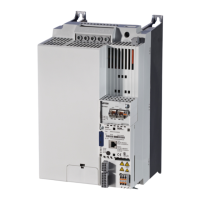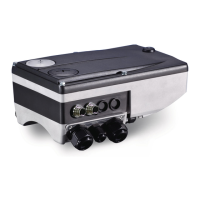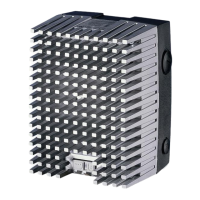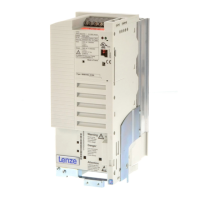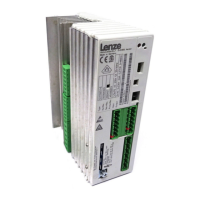50 Technical description 8100_A
7.6.9 POLARITYOF DIGITALOUTPUT C118
The functions assigned to the digital outputs A1 to A4 can change between HIGH
active and LOW active.
Caution: The setting of the polarity refers to the selected signal. It is lost when
the function of the terminal is changed, i.e. with every new assignment,
the factory-setting is activated.
7.6.10
PRESELECTION OF SURVEILLANCE C119
SURVEILLANCE FUNCTION C120
The surveillance functions "external fault" and "PTC motor protection fault" can be
activated or deactivated using C120. In addition, you may select between a warning
or a trip indication, in case a fault should occur (see 7.4.5). For this, first enter the
desired surveillance function with C119 and then enter the function with C120.
For example, the surveillance function "external fault" is entered with C119 = -0-,
then it is activated with C120
= -2-as warning.
A warning is automatically displayed, just like a Trip fault. Unlike a Trip fault, the
displays (operating state display and plain text display of the operating unit 810288)
are not flashing during a warning. During a warning, the signal "healthy" (RDY)is
reset, but the operation of the frequency inverter is not interrupted. The warning is
confirmed just like a Trip fault and is stored in the history butter.
7.6.11 BAUD
RATE C125
The baud rate is selected with C125.
7.6.12
ENABLE ADDITIONAL TI-TIM ES C130
Terminal control:
The enable of the additional Ti times results from the binary coding of the input
terminals used for this function.
A maximum of 4 digital inputs can be assigned to the function "enable of Ti times"
.
This means that 1, 3, 7 or 15 addtional Ti times can be used.
The Ti times refer to fdmax and can be calculated as described under 7.2.2.
lenze

